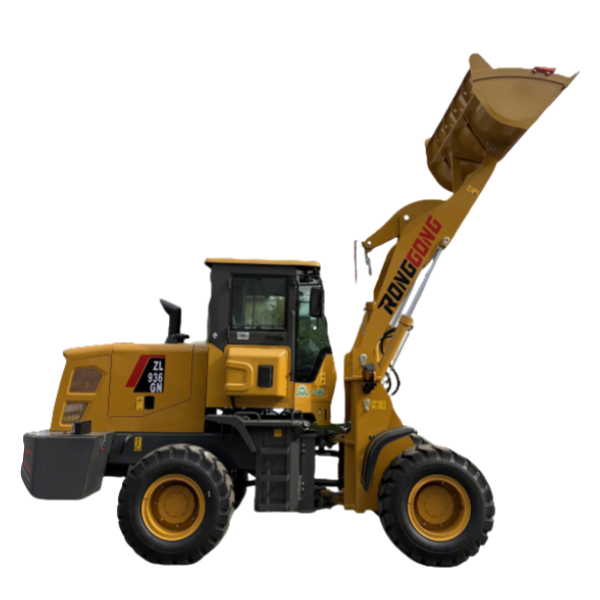In 1929, the world's first wheel loader was born, with a bucket capacity of 0.753 cubic meters and a load capacity of 680 kilograms. This loader adopts a gantry structure and uses a wire rope bucket loading and unloading tool. The early loaders had front engines, small front wheels and large rear wheels, single-axle front axle drive, front wheel steering, gantry working devices, wire rope arm bucket loading and unloading tools, tractor chassis, small traction, small bucket cutting force, and low operating speed.
In 1947, Clark Company of the United States made improvements, replaced the gantry structure with a hydraulic linkage mechanism, and used a special chassis to manufacture a new generation of wheel loaders. This loader has the appearance of a modern loader, and has improved the lifting speed, unloading height, digging force and cutting force, so it can be used to shovel loose earth and stone. This is the first major breakthrough in the development of loaders.
In 1951, the United States began to adopt hydraulic mechanical transmission technology. At the same time, the frame structure adopted three-point support and the engine was placed at the rear, which improved the off-road and traction of the vehicle. In the mid-1950s, the development of the transmission system was a critical 10 years, forming a transmission structure of diesel engine-hydraulic torque converter-power shift gearbox-double-axle drive, which was the second major breakthrough of the loader.

In the 1960s, loader manufacturing began to abandon the rigid frame and adopt articulated frame technology. The bucket turned with the front frame. This was the third major breakthrough in the development of the loader. The frame is hinged in the middle and divided into front and rear parts. The front frame is articulated and turned to meet the requirements of turning in place; compared with the rigid frame, the average driving distance in one operation cycle is reduced by more than 50%, and the production efficiency is increased by 50%; the turning radius is small, the maneuverability is flexible, and it is suitable for narrow field operations.
In the 1970s and 1980s, the structure of the loader during this period developed towards safety, labor-saving operation, convenient maintenance, and reduced pollution.
From 1990 to 2000, loaders in this era focused on operation and structural rationality. At this time, major loader manufacturers in China began to produce loaders. At this time, loaders were semi-hydraulic systems, and operation was still relatively difficult.
Today's loaders have transitioned from functional types to intelligent, energy-efficient, comfortable and safe types.

